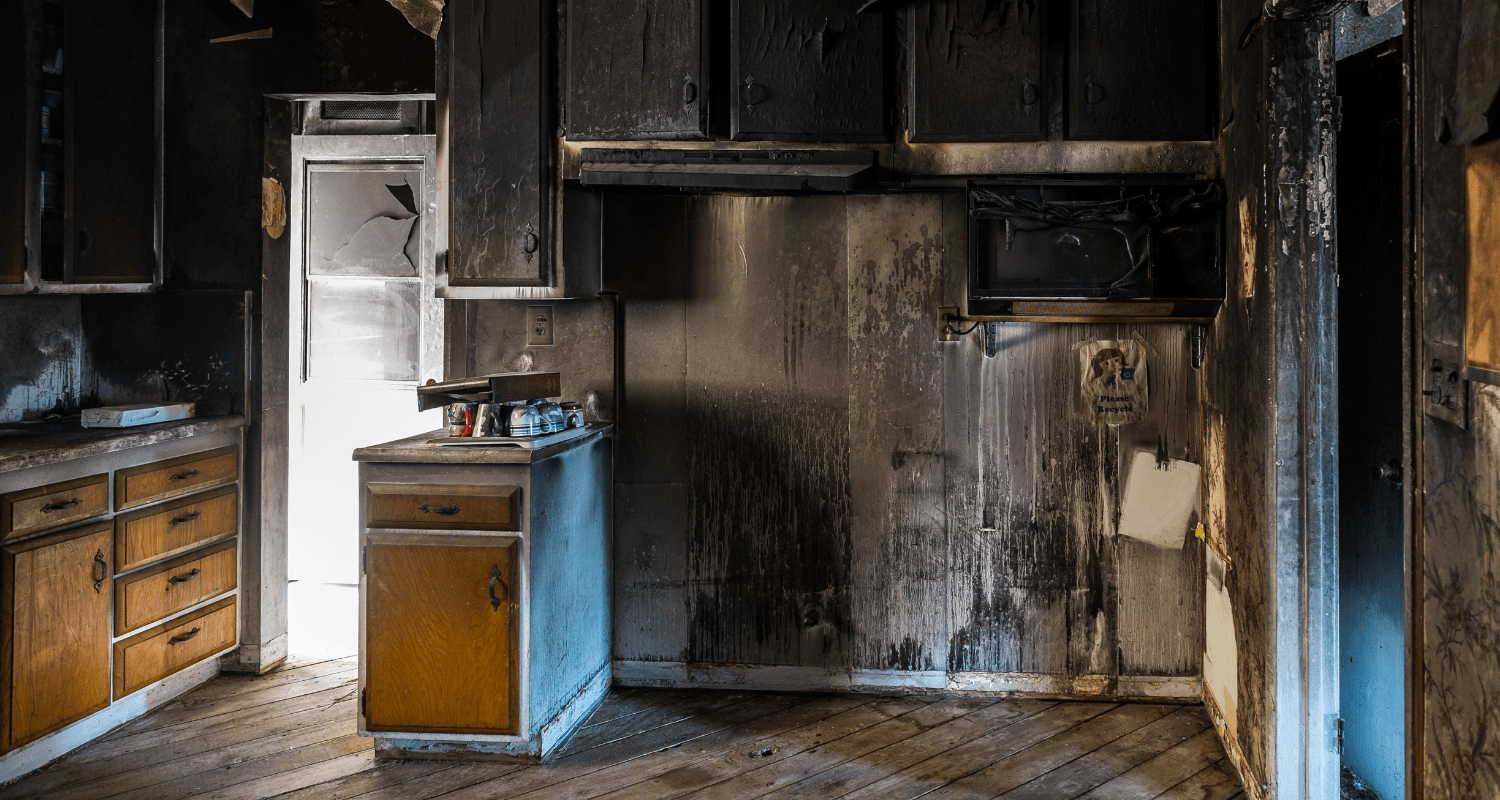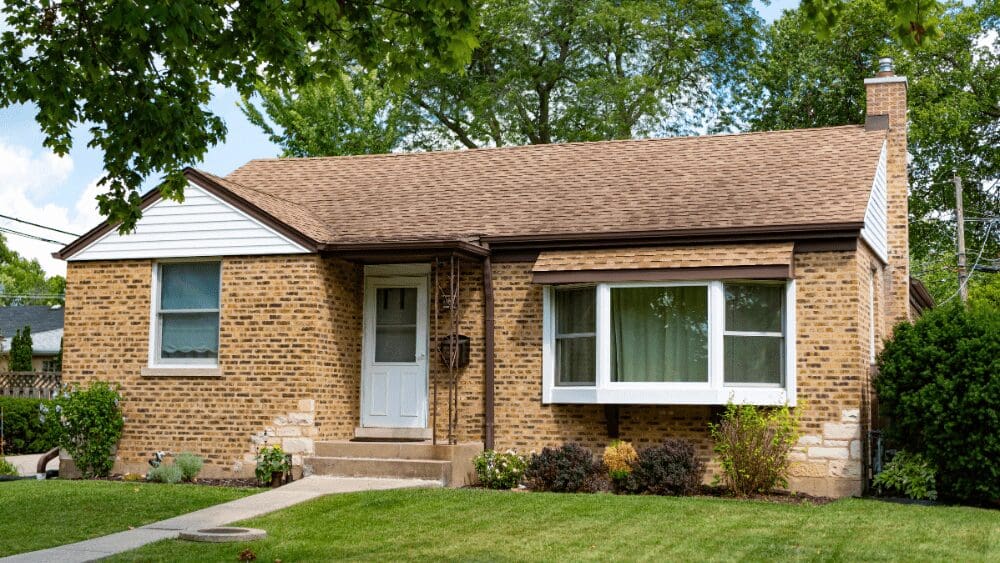
No one likes to be woken up by the sound of a smoke detector going off. Of all the horrible things that could happen to your home, a house fire is among the most serious. It’s particularly devastating if you were hoping to sell your home soon, because now you’re worried about the challenges of selling a house with fire damage. According to the National Fire Protection Association (NFPA), 356,500 home structure fires were reported in 2020, causing a staggering $8.4 billion in property damages. Thanks to improvements in home fire safety, this is less than half the 734,000 house fires reported in 1980. Despite increasing concern around wildfires, especially in the American West, only 3% of home fires are caused by wildfires (though they do account for a disproportionate amount of total fire damage to houses). Instead, the leading cause of residential fires is cooking-related (49%), and the average homeowner’s insurance claim for fire damage is around $80,000. Gene Darden, a top-selling real estate agent in Birmingham, Alabama, with more than 360 transactions under his belt, has seen his fair share of homeowners struggle with selling a house with fire damage. When selling a house with fire damage, homeowners can choose to sell their home “as-is” to a cash buyer, or can focus on restoring their home to its previous condition and selling their home to a traditional buyer using an experienced real estate agent. It’s understandable that after a house fire, you will be overwhelmed, emotionally drained, and stressed out about the financial ramifications. However, there are important actions you must take immediately after a house fire. Ready.gov has a comprehensive guide about home fires, and they recommend that if you need temporary housing, food, or medication, to contact the Red Cross or your local disaster relief service for help. They can also help with mental health support and recover documents for financial recovery. After getting in touch with a disaster relief organization, you’ll need to: Next, you’ll need to decide if you will sell your home in as-is condition or if you’ll make the repairs. If you want to sell your home in as-is condition, you can search out a cash buyer, but there’s no guarantee that it’ll be a fast sale. If you’re looking for a speedy transaction, you can try HomeLight’s Simple Sale platform. With Simple Sale, you can get an all-cash offer in as little as 48 hours. Even better, the property could sell and you could have cash in your hand in as little as ten days without worrying about doing any repairs, or being on the hook for prep costs, agent commissions, and other fees. If you’re not pressed for a fast sale and want to hire a real estate agent to sell your home, you’ll want to follow these five steps to selling a house with fire damage. Restoring your home to its previous condition can get expensive. According to HomeAdvisor, repairing fire and smoke damage can cost between $2,853 to $37,491, and the national average sits around $19,956 for a total repair. Larger fires that destroy a kitchen or cause significant damage to the roof can cost over $50,000 to repair. Keep in mind that these costs are going to depend on a variety of factors like: Before doing any work to your home, you need to contact your insurance adjuster or representative first. They will go over your policy and let you know what is covered and how much you’ll have to pay out of pocket. Luckily, most insurance policies cover fire damage, with some exceptions such as arson and a negligently maintained structure. Insurance may also cover lodging expenses while you repair your house and any damage the fire may have caused to your neighbors. Note: There are 4.5 million American homes in high or extreme risk areas for wildfires. If you live in one of these areas, your insurance company may require a wildfire insurance policy. However, some insurance companies may not offer coverage, and if that happens, you can contact the state commissioner’s office for help or look into a FAIR plan. After repairing your home and everything looks great, it’s not unusual for homeowners to ask, “Do you have to disclose a fire when selling a house?” The house has been repaired, there’s no more damage, and it doesn’t smell like smoke anymore. To comply with your state’s disclosure laws, you will likely need to disclose the fire. “Most people are going to find out or know that the home has been on fire,” Darden said. “So the only way to alleviate that and actually be able to sell that home and get a fair market value for it is to be extremely extensive with the details and what you did to put that home back together, and how you made sure it met codes and standards that would apply to any home.” You must keep detailed records of all the work that’s been done to your home when you’re repairing fire damage. “A buyer is going to be looking at the house through a microscope. So you just got to be prepared for that, even more so than your standard inspection and purchase,” says Darden. “Really dot your i’s and cross your t’s in reference to documenting everything that was done to bring that house back up to speed, all the way down to photos and paid invoices.” Note: It’s a good idea to keep track of all repairs and renovations you make to your home from the moment you move in. You can use the receipts and invoices when determining the asking price when you want to sell the house further down the road. Darden advises that homeowners be upfront when selling a house with fire damage, including how the fire started. “People are going to ask, just wanting to know, like anything else that would happen in the house that would stigmatize it. Then they make their assessment based on that,” Darden reports. “If it’s your standard kitchen fire or electrical fire or vent hood, it goes right back to the documentation of showing them that, ‘Hey, this is what happened, and this is what we’ve done to make sure it doesn’t happen again.’” Selling a house with fire damage can be a challenge. Potential buyers are likely to have plenty of questions and will want to go over every repair that was done as a result of the fire. They may also request specialized inspections like: “You don’t want to get laser-focused on ‘I got to sell this house in 20 days.’ Instead, let’s talk about point A to point B and all things in between, and get a plan for each of those things. That’s going to make your processes a lot easier,” he said. “If you do all those things correctly, then you’re going to turn around and get market value for the home.”Immediate action after a house fire
Selling a house with fire damage in as-is condition
5 steps to selling a house with fire damage
1. Restore the home to its original condition
2. Disclose any previous fire damage to potential buyers
3. Keep detailed records from the restoration
4. Don’t withhold information from buyers
5. Be patient!



